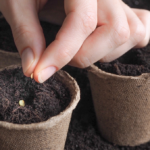
USDA Releases Mapping Tool to Aid Growers in a Changing Climate
- foodfightadmin
- November 23, 2023
- Agriculture, Climate Change, Federal, Hunger In America
- adlps, ads pages
- 0 Comments
The U.S. Department of Agriculture’s latest update to its “plant hardiness zone map,” released Wednesday for the first time in ten years, reveals significant shifts in climate patterns across the United States, reshaping the landscape of gardening and horticulture.
This newly updated map, a crucial tool for gardeners and growers, highlights the impact of climate change on plant growth and survival in various regions. Notably, traditional Southern staples like magnolia trees and camellias, once vulnerable to frost, may now find a hospitable environment in areas like Boston, previously deemed too cold.
The map’s revisions reflect uneven climate shifts across the country, with the Midwest experiencing more warming than the Southeast. It offers updated guidance on which flowers, vegetables, and shrubs are likely to thrive in specific areas. A key metric on this map is the lowest likely winter temperature for each region, an average of the lowest winter temperatures over the past 30 years.
According to Chris Daly, a researcher at Oregon State University’s PRISM Climate Group, which collaborated with the USDA’s Agricultural Research Service on the map, the overall lowest likely winter temperature in the lower 48 states is now 2.5 degrees Fahrenheit (1.4 degrees Celsius) warmer than in 2012.
Richard Primack, a plant ecologist at Boston University, observed, “Half the U.S. has shifted to a slightly warmer climatic zone than it was 10 years ago.” He noted personal changes in his garden, such as fig trees surviving winter without protection and the presence of camellias and southern magnolia trees in Boston, indicating a marked shift towards warmer conditions.
This warming trend is particularly noticeable in winter temperatures, which are rising faster than daytime and summer temperatures, leading to changes in the lowest winter temperature at a quicker pace than the overall U.S. temperature.
However, these warmer winters come with their challenges. Theresa Crimmins from the University of Arizona, an expert in climate change and growing seasons, points out the downsides, such as reduced die-backs of disease-carrying insects like ticks and mosquitoes. Additionally, hotter, drier summers in some regions may threaten the survival of plants previously well-adapted to those areas.
Crimmins advises caution in selecting plants, emphasizing the importance of choosing species currently adapted to the existing climate conditions of an area. As the climate continues to shift, both plants and growers must adapt to these new realities.








